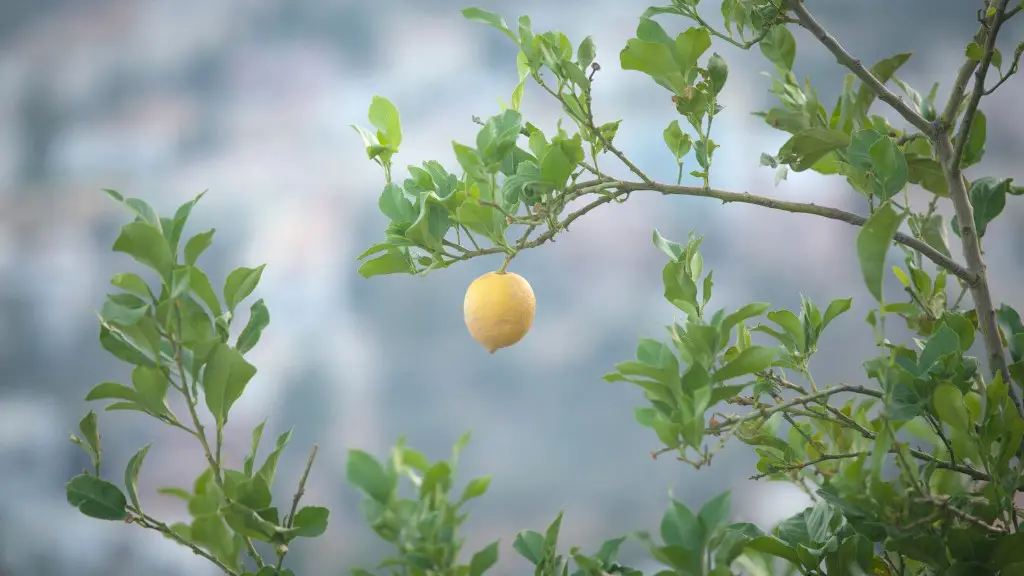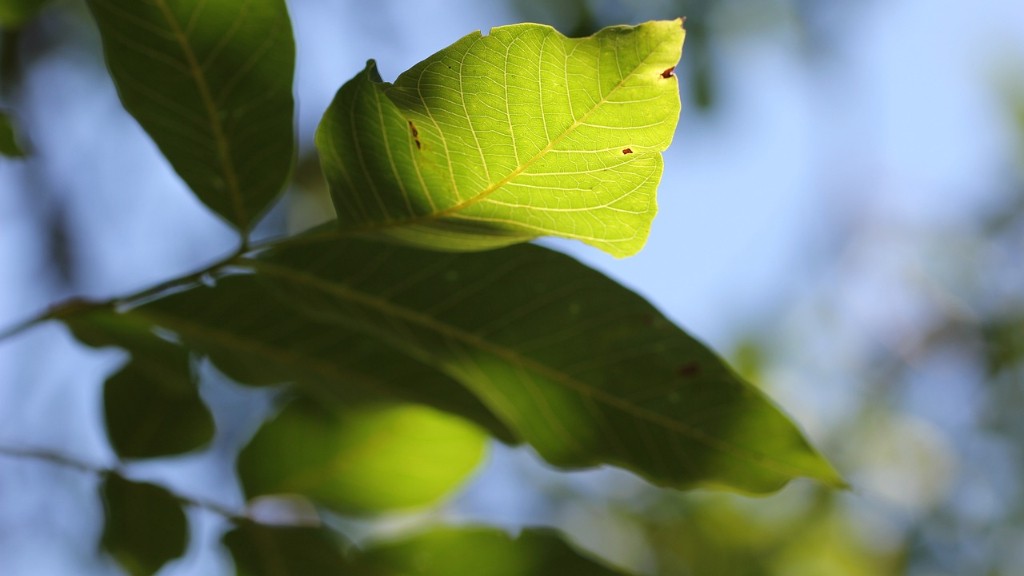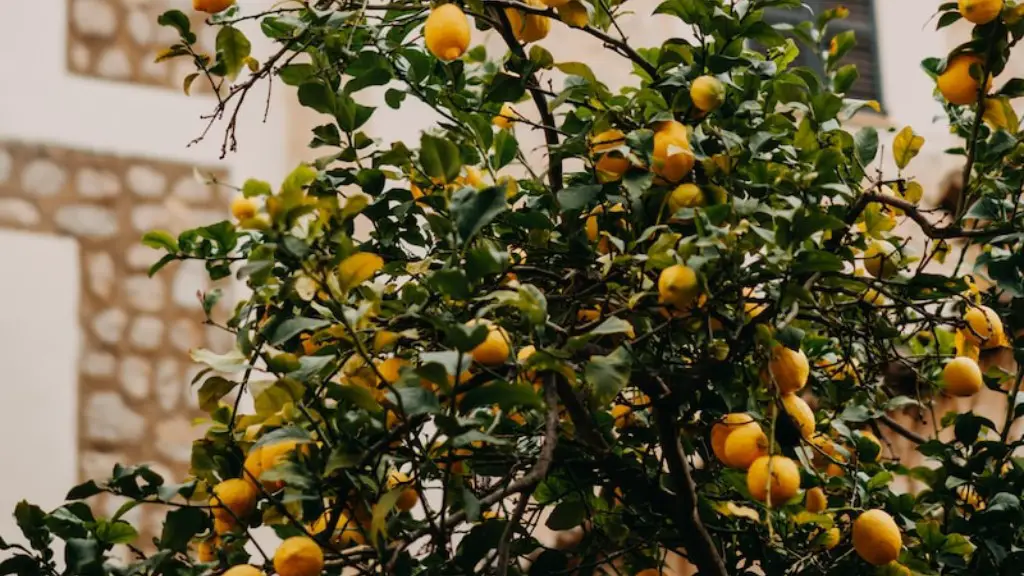It is essential to repot your Meyer lemon tree every 2-3 years to ensure proper growth and health for your fruit-bearing tree. Despite popular belief, repotting doesn’t take an expert and can be done with relative ease. To repot a Meyer lemon tree, the following steps should be followed.
Section 1: Supplies Needed
Before beginning, you’ll need to gather the right supplies. The supplies needed are: a new and large pot, soil with pH balance of 6.0-6.5, organic compost and mulch, pruning shears, gravel, and slow-release fertilizers. Make sure your pot is large enough to hold your tree and has good drainage.
The pot should be wide enough to accommodate up to one-third of the root system of your Meyer lemon tree. The soil should create a suitable environment for root growth and the organic compost can be mixed with the soil to provide a good supply of essential nutrients for the tree.
Prune the lemon tree carefully with your pruning shears as necessary to maintain a healthy shape of the tree and add some gravel in the bottom of the pot to promote better water drainage, as Meyer lemon trees need plenty of water.
Finally, before repotting your lemon tree, you will need to purchase some slow-release fertilizers, which will help you feed the tree with a steady stream of nutrients and provide the right amount of fertilizer, depending on which type of fertilizers you use.
Section 2: Removing the Tree From the Old Pot
Start by removing the tree from its old pot. Once the tree is out of the pot, lay the tree on its side and gently spread out the roots. Remove any dead or decaying roots and make sure to use sharp pruning shears to make clean cuts, as this will help promote better root growth in your new pot. It may also be necessary to reduce the root ball size by carefully cutting away any roots that are too long or are wrapping around the rootball.
Once the rootball has been trimmed, use a trowel to carefully loosen up the sides and bottom of the rootball. This will help ensure adequate drainage. After that, place the rootball in the new pot and fill the remainder of the pot with soil, taking care to ensure that the tree is stable and not going to move around in the pot.
Once the rootball is in place, use your hands to fill in the rest of the soil and gently press it down to create a firm and even surface. You may also need to use some of the mulch to create a same level for the surface of the soil.
Section 3: Water and Fertilize
After the lemon tree is repotted, it’s essential to water the tree thoroughly and then use the slow-release fertilizer to feed the tree. You may also want to add some organic compost to the top of the soil surface to give the tree an added boost of nutrients.
Keep in mind that the Meyer lemon tree needs plenty of water, so make sure to keep the soil moist but not waterlogged. You can do this by providing the tree with an inch of water every other day, depending on the weather conditions. Make sure to water the tree deeply and allow the water to soak in before adding more water.
Once you have done this, spread the mulch around the base of the tree to preserve the moisture and help keep the soil cool. You will want to make sure to fluff up the mulch every few weeks to ensure that it does not block out any essential sunlight or create any compacted clumps in the soil. This is especially important as Meyer lemon trees need plenty of sunlight to grow and fruit.
Section 4: Pruning
Once your tree is repotted and watered, you can begin to prune your tree to ensure it is healthy, balanced and able to bear fruit. Pruning is usually done in the winter months to ensure proper development of the lemon tree’s branches and leaves. Pruning will also help to shape the tree and provide adequate space for the new growth.
Before you start to prune, make sure to identify any crossing, damaged or diseased branches that need to be removed first. Cut away any of these branches, keeping in mind to make clean cuts with sharp pruning shears, and be sure to prune any branches that are taking up too much energy. You can also prune away any branches that are shading the burgeoning fruits, as this will help the fruits ripen faster.
Once you’ve finished pruning, be sure to check on the Meyer lemon tree regularly to ensure that all the pruned branches are growing back in a healthy shape and that the tree is continuing to receive the correct amount of water and care.
Section 5: Ongoing Care
You’ll need to provide ongoing care for your Meyer lemon tree once it’s been repotted, watered and pruned. This includes providing adequate water, light and nutrition to ensure it’s healthy and able to bear fruit.
Meyer lemon trees need at least 6-8 hours of full sunlight each day, so make sure to find a sunny spot for your lemon tree. Shelling out a bit of extra cash on an outdoor light timer for your lemon tree may be a good idea as these timers can be set to turn lights on and off as needed.
Regarding nutrition, a slow-release fertilizer will provide your Meyer lemon tree with enough nutrients for a few months at a time, so you don’t have to worry about fertilizing your tree too often.
Lastly, keep an eye on the temperature of the soil and never let it get too cold or too warm. Too much heat can be bad for your Meyer lemon tree, and cold temperatures can damage the leaves and make it much more prone to pests and diseases.
Section 6: Pest and Disease Control
Meyer lemon trees are susceptible to pests and diseases, so it’s important to keep an eye out for any signs of trouble. If you notice any signs of infestation, act quickly and implement the necessary treatment. Some symptoms of pest or disease problems include yellowing of leaves, wilting, or white spots on the leaves.
You can use a number of methods to prevent and tackle pest and disease problems. These include installing copper tape on the trunk, spraying neem oil, or investing in chemical pesticides and fertilizers. Make sure to wear the right protective gear when handling pesticides or fertilizers.
It’s also important to check your Meyer lemon tree regularly for signs of stress. If you find any signs of stress, you may need to adjust the amount of water or sunlight the tree is getting, prune away any excess branches, or increase the amount of fertilizer that’s being used. These measures can help to reduce stress and promote better growth in your Meyer lemon tree.
Section 7: Proper Storage
Once your Meyer lemon tree is fully repotted and you’ve taken all the necessary steps to protect it from pests and diseases, it’s essential to store your tree properly. Place the pot in a spot that is sheltered from strong winds and dry air and that is easy to access for watering. You should also make sure the tree is not in direct sunlight for long periods as this can be bad for the tree’s growth.
In colder months, it is important to move the tree into a warmer spot where the temperature will stay between 45-50 degrees Fahrenheit and the soil is not exposed to freezing temperatures. If you have any valuable Meyer lemon tree fruits, make sure to cover them with something like an old blanket or tarp to protect them from cold temperatures.
Finally, check on your Meyer lemon tree regularly, especially in cold winter months, and make sure it is not exposed to extreme weather conditions. Following these steps will help ensure your Meyer lemon tree will remain healthy and will be able to bear delicious fruit.





